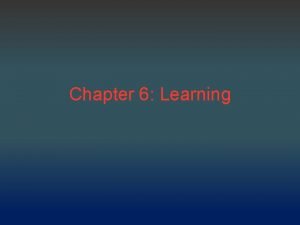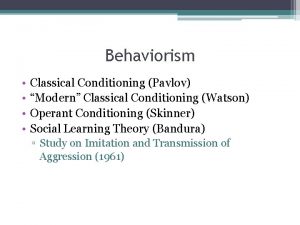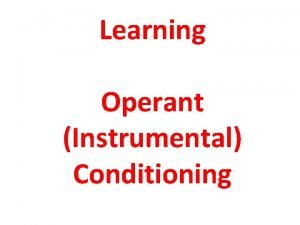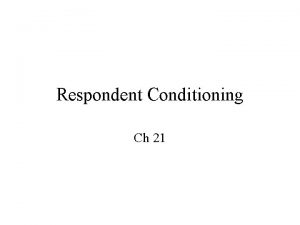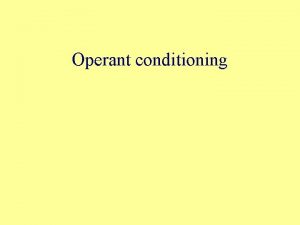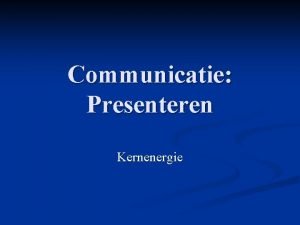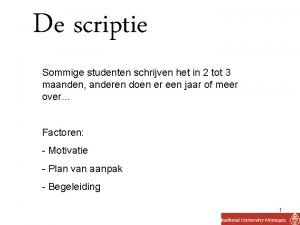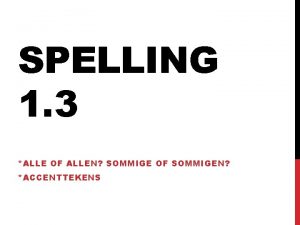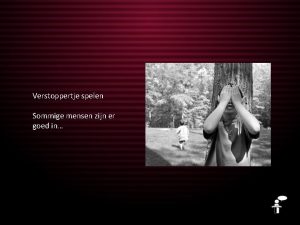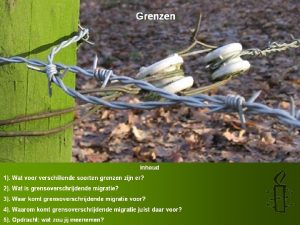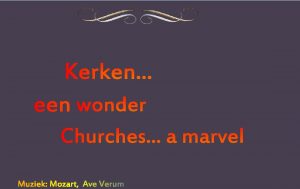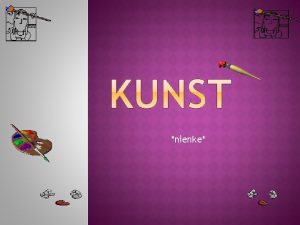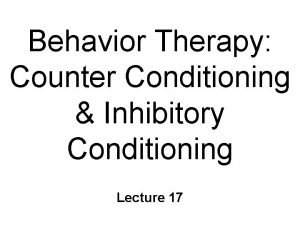Sommige or sommigen Factors conditioning the e or




























- Slides: 28

Sommige or sommigen? Factors conditioning the –e or –en of independently used quantifiers Eric Hoekstra Taalkunde In Nederland-Dag 2013

2. Two uses of quantifiers • In an attributive construction. • Independently used (nominalised).

3. Attributive use Beide fammen binneoan it dûnsjen. both women are at the dancing “Both young women aredancing. ” NB The attributive quantifier does not display variation between –e and – en.

4. Independent use Beide / Beiden binneoan it both are at “Both are dancing. ” dûnsjen. the dancing NB The independently used quantifier may in actual practice be written with –e or with –en. The same facts hold of Dutch.

5. Prescriptive rules for Dutch independently used quantifiers They are written with –n (ANS 1997: 366) iff (i) they don’t have an antecedent within the text (ii) they refer to humans. Otherwise, write –e.

6. Relevant factors (hypotheses) 1. The semantics of the antecedent (person or not) 2. The specific lexical item involved 3. The position in the syntactic structure 4. The position of the antecedent (intratextual or not) Only factors 1 -3 are investigated here.

7. Type of construction Partitive construction automatically entails an intratextual antecedent: Sommige fan ‘e feintsjes some of the boys

8. Relevance The claims made in the literature all based on the author’s intuitions, not on corpus based research, with the exception of Popkema (1979).

9. Popkema (1979) • Does not calculate significance. • Does not calculate phi-value (explanatory value). • Has as his aim to establish a prescriptive rule. • Presents extensive quantitative data.

10. Factor 1 Is there a correlation between the use of –e or –en, and the presence of a human or nonhuman antecedent? (Significance and phi-coefficient: http: //faculty. vassar. edu/lowry/tab 2 x 2. html)

11. Quantifier: beide(n) ‘both’ beide(n) + human -en 71 14 -e 219 97 p = 0. 9 % phi = 13% source: Popkema -En correlates with human antecedent. The correlation does not explain much of the observed variation (phi = 13 %)

12. Quantifier: inkelde(n) ‘a few’ inkelde(n) -en -e + human 46 2 - human 3 6 p < 0. 1 % phi = 66% source: Popkema -En correlates with a human antecedent. The correlation explains a lot of the observed variation.

13. Sommige and somlike ´some´ sommige(n) + somlike (n) -en -e p < 0. 1 % + human - human 44 5 2 7 phi = 60% source: Popkema -En correlates with a human antecedent. The correlation explains a lot of the observed variation.

14. Ferskate ‘several’ ferskate(n) -en -e + human 2 20 p>5% Not significant. - human 0 6 source: Popkema

15. Correlation –en with the presence of a human antecedent beiden inkelden somliken ferskaten ‘both’ ‘a few’ ‘some’ ‘several’ + + + - The presence of a human antecedent promotes the use of -en, for low degree quantifiers.

16. Factor 2 Is there a correlation between the specific quantifier involved and the choice of –e / -en? (Data on the previous slide already suggested this)

17. Comparison inkelde ‘a few’ with ferskate ‘several’ -en -e p < 0. 1 % inkelde 49 8 phi = 76 % ferskate 2 26 source: Popkema There is a correlation between the choice of quantifier and –E / -EN, and it explains a lot of the observed variation.

18. Comparison sommige+somlike ‘some’ with ferskate ‘several’ -en -e sommige+somlike ferskate 46 2 12 26 p < 0. 1 % phi = 68% source: Popkema The correlation explains a lot of the observed variation.

19. Conclusion There is a partial correlation between the use of –e or –en, and the specific quantifier involved. Medium degree quantifiers use the -e more often than low degree quantifiers.

20. Factor 3 Is there a correlation between the choice of suffix (–e / -en) and type of construction in which the independently used quantifier is found? Example of syntactic construction: the partitive construction.

21. Partitive construction * Beide(n) fan ‘e both of the Inkelde(n) a few fan ‘e of the feintsjes. boys / somlike(n), sommige(n) / ferskate(n) some several feintsjes. bousboys Beide ‘both’ is anyhow excluded from the partitive.

22. Inkelde(n) ‘a few’ inkelde(n) -en -e p = 1, 7 % partitive 2 3 other 47 5 phi = 41 % source: Popkema The partitive correlates with –e, as compared to other constructions.

23. Sommige ‘some’ sommige(n) -en -e p < 0. 1 % partitive 10 12 other 102 24 phi = 29 % source: FLC The partitive correlates with –e, as compared to other constructions.

24. Somlike ‘some’ somlike(n) Partitive -en 40 -e 15 p < 0. 1 % other 307 12 phi = 32 % source: FLC The partitive correlates with –e, as compared to other constructions.

25. Ferskate ‘several’ ferskate(n) partitive other -en 1 2 -e 17 13 p > 5% source: FLC Not significant (NB too few instances).

26. Conclusion The partitive shows a preference for –e as compared with other constructions, for low degree quantifiers. Hence construction type is a relevant factor.

27. Overall conclusions The following three factors are relevant for the choice of suffix (–E / -EN): 1. Human / nonhuman reference 2. Specific quantifier involved 3. Type of construction The ANS promotes major and minor tendencies to absolute prescriptive rules (as far as Frisian is concerned, but by and large Dutch seems to exhibit similar facts).

Thank you for your attention! ehoekstra@fryske-akademy. nl
 Sommigen of sommige
Sommigen of sommige Classical conditioning vs operant conditioning
Classical conditioning vs operant conditioning Social learning theory vs operant conditioning
Social learning theory vs operant conditioning Operant vs classical conditioning
Operant vs classical conditioning Variable ratio schedule
Variable ratio schedule Classical conditioning vs operant conditioning
Classical conditioning vs operant conditioning Little albert experiment summary
Little albert experiment summary Classical vs operant conditioning
Classical vs operant conditioning Operant conditioning classical conditioning
Operant conditioning classical conditioning Classical and operant conditioning.
Classical and operant conditioning. Operant conditioning vs classical conditioning
Operant conditioning vs classical conditioning Dactors of 8
Dactors of 8 Is a wooden chair biotic or abiotic
Is a wooden chair biotic or abiotic Factors of 7
Factors of 7 Abiotic vs biotic factors
Abiotic vs biotic factors Biotic vs abiotic
Biotic vs abiotic Gcf of 56
Gcf of 56 Abiotic vs biotic factors
Abiotic vs biotic factors Location
Location Site factors vs situation factors
Site factors vs situation factors Dạng đột biến một nhiễm là
Dạng đột biến một nhiễm là Nguyên nhân của sự mỏi cơ sinh 8
Nguyên nhân của sự mỏi cơ sinh 8 độ dài liên kết
độ dài liên kết Chó sói
Chó sói Thiếu nhi thế giới liên hoan
Thiếu nhi thế giới liên hoan điện thế nghỉ
điện thế nghỉ Một số thể thơ truyền thống
Một số thể thơ truyền thống Thế nào là hệ số cao nhất
Thế nào là hệ số cao nhất Trời xanh đây là của chúng ta thể thơ
Trời xanh đây là của chúng ta thể thơ


